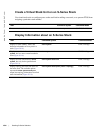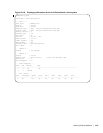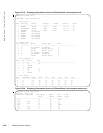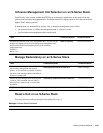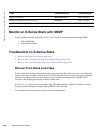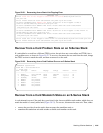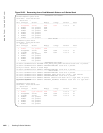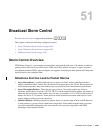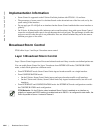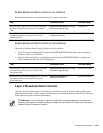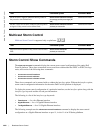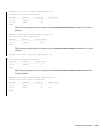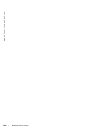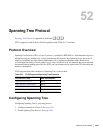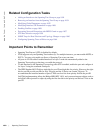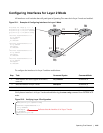
1044 | Broadcast Storm Control
www.dell.com | support.dell.com
Implementation Information
• Storm Control is supported on the E-Series ExaScale platform with FTOS 8.1.1.0 and later.
• The percentage of storm control is calculated based on the advertised rate of the line card, not by the
speed setting of the interface.
• Do not apply per-VLAN QoS on an interface that has Storm Control enabled either on an interface or
globally.
• On E-Series, bi-directional traffic (unknown-unicast and broadcast) along with egress Storm Control
causes the configured traffic rates to be split between the involved ports. The percentage of traffic that
each port receives after the split is not predictable. Ports are affected whether they are in the same or
different port-pipes or line cards.
Broadcast Storm Control
FTOS offers Layer 3 and Layer 2 broadcast storm control.
Layer 3 Broadcast Storm Control
Layer 3 Storm Control suppresses all-hosts and subnet broadcasts if they exceed a user-defined packet rate.
You can enable Storm Control for Layer 3 broadcasts from INTERFACE mode, CONFIGURATION
mode, or both. Each option has a different result.
• From INTERFACE mode: Storm Control limits ingress broadcast traffic on a single interface.
• From CONFIGURATION mode:
• On the E-Series, Storm Control limits ingress and egress broadcast traffic on all interfaces.
• On the C-Series and S-Series, Storm Control limits only ingress broadcast traffic, but still on all
interfaces.
• From INTERFACE and CONFIGURATION mode: the INTERFACE mode configuration overrides
the CONFIGURATION mode configuration.
FTOS Behavior: On the E-Series, when broadcast Storm Control is enabled on an interface or
globally on ingress and DSCP marking is enabled and set to DSCP=1 is configured for data traffic, the
traffic is queued to Queue 1 instead of Queue 0.



